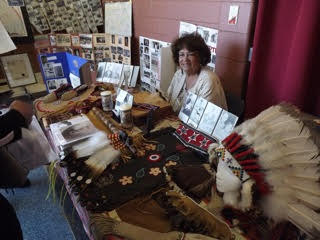
By DON STINE
Migration has a long history and it is still occurring today, and “Black Migrations” was the central theme of Neptune’s 15th annual Black History Celebration Sat., Feb. 16.
Neptune Mayor Carol Rizzo said that migration is “an important conversation.”
“A number of folks came north during the Great Migration and this led to significant changes to our nation, especially in education and business. The reality is that without these migrations we would all be the poorer and it enriches the entire community,” she said.
The Great Migration was the movement of six million African-Americans out of the rural Southern United States to the urban Northeast, Midwest, and West occurring between 1910 and 1970.
The Black History Month event was sponsored by the township and Board of Education at the Michael T. Lake Performing Arts Center. The presentation featured local families with African roots, presenting stories about their family migrations into Neptune. Stories were told about the Sand Hill Indians by Sharon Coleman Davis; A Haitian Family Dream by Kareen Delice-Kircher; Southern Christian Roots by Sheila B. Jones; and Staying Together by Velda Harris.
But some migrations also happened much earlier in American history, just ask Claire Garland, director of the Sand Hill Indian Historical Association.
Garland said her Cherokee ancestors came to the New Jersey area from Georgia as early as 1790 because their land was being seized by the government. She said many ended up in the Neptune area because there were construction jobs here.
“Our ancestors came here through forced migration as many others are. People usually move because they are forced to move. It is not a good environment. They find a way out and they try to take it,” she said.
Garland said she thinks it is a good idea to discuss these types of migrations.
“It is good because it’s important for the next generation to see what preceded them- their history and their heritage,” she said.
Garland estimates there are more than 100 Sand Hill Indian descendants in Monmouth County.
“There is still a sense of community and people come to our events from other parts of the country,” she said.
Event co-organizer Dianna Harris said that migrations still continue to this day due to the economy, war, or other local problems.
“There is always migration,” she said, citing recent arrivals from Haiti and other Caribbean countries, and Hispanics. “There are people from everywhere,” she said.
The Great Migration was one of the largest and most rapid mass internal movements in history- perhaps the greatest migration not due to threats, like executions, wars, and starvation.
According to Wikipedia, in sheer numbers it outranks the migration of any other ethnic group—Italians, Irish, Jews or Poles—to the United States. For blacks, the migration meant leaving what had always been their economic and social base in America, and finding a new one.












